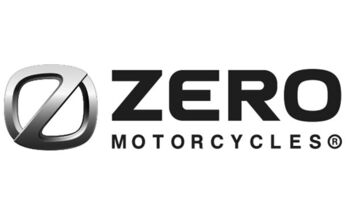Featured Motorcycle Brands

Harley's Reduced '07 shipments Cause For Alarm?
The Milwaukee, Wis.-based company cites consumer skittishness caused by a tightening U.S. economy behind its decision to ship between 86,000 and 88,000 motorcycles in the third quarter, compared to its original forecast of 91,000 to 95,000 units.
Shipments for the full year are expected to be in the range of 328,000 to 332,000 motorcycles, down from about 349,000 last year. H-D also expects revenue and earnings to be off by about 5% for the year, and is hedging its bets on 2008 and even looking cautiously to 2009.
This is a difficult time for the U.S. consumer, Harley-Davidson CEO Jim Ziemer said in announcing the cuts.
Clearly, this is not great news for one of the largest OEMs in the business, but neither is it a sign that the bottom is about to fall out of the motorcycle market.
What alarms people about this news is that Harley-Davidsonas king of the cruisers and with cruisers being a key categoryin many ways represents the motorcycle industry. When people hear H-D is cutting back, they fear the sky may be falling on this, a business that has enjoyed 14 consecutive years of growth.
Ongoing economic uncertainty has significantly affected the retail environment in our industry, as well as others, and we expect a challenging retail environment for the balance of 2007 and 2008, H-D spokesman Bob Klein told Motorcycle.com. Retail sales drive Harley-Davidson wholesale shipments, and when demand is closer to supply, we believe our business is more subject to economic forces than it has been in the past.
Indeed. The truth is, not many industries have enjoyed such a good ride over the last 15 years as the motorcycle business has. Only seven years ago, in 2000, the U.S. motorcycle market stood at just $7.2 billion, growing to $12.7 billion in 2004 and about $15 billion in 2005. Thats double in seven years. Packaged Facts, a Rockville, Md., subsidiary of MarketResearch.com, in 2005 estimated the market would grow to $21.5 billion in 2010.
So, a bump in the road was bound to happen. Some larger economic factor was bound to put the brakes on the cushy ride motorcycles have enjoyed. In this case, it happens to be a couple of factors, not the least of which is consumer skittishness due to some economic uncertainty. And since H-Ds bikes often carry weighty price tags, it stands to reason that consumers will be more selective about how they spend their disposable income.
Packaged Facts, in fact, foresaw Harleys troubles two years ago.
Going forward, Harley-Davidson, the leading cruiser manufacturer, faces major challenges, the firm wrote in 2005. The typical age of a Harley rider is now 45(10 years ago it was 37), and 20% of Harley riders are over 55. Despite all the companys successes in the past 18 years, Harley has had a difficult time attracting younger consumers, who tend to go for the sporty, fast, technologically-savvy racing bikes produced by Honda, Yamaha and Suzuki.
The fundamentals of Harley-Davidsons business are strong and the company expects to be profitable in 2007 and 2008.
Harley has been investing in its product to attract a younger buyer. It continues to revamp its affordable Sportster line, and its higher-tech V-Rod family with liquid-cooled Revolution engines continues to appeal to a more youthful market, although it hasnt been quite the sales success The Motor Company had expected. In addition, Harley has its sportbike subsidiary, Buell, to lure in the Gen Y market. The Buell line is set to get a bump with the recent introduction of its trick, liquid-cooled 1125R, which will undoubtedly be morphed into several new models in the upcoming years, just the thing to attract technology-hungry younger riders.
The future of the motorcycle industry is Generation Y (those born between 1979 and 1995), the progeny of the baby boomers. There is concern throughout the industry of how this new bubble will be accommodated.
No one knows for sure how long the challenges facing H-Dand others, to be surewill last, but thats the nature of doing business. In the meantime, recognizing the current climate, H-D is taking the necessary, proactive action. And history has shown there are plenty of companies in a variety of industries that lacked the brains or the brawn to such make difficult decisions, and it ending up costing them dearly.
The decision to reduce shipments is primarily about protecting Harley-Davidsons greatest asset our brand, Klein told Motorcycle.com. While a decision to reduce shipments and guidance is never easy, it is clearly the right thing to do for the long-term health of the brand and the business, since a key way to strengthen the brand is to maintain supply in line with demand.
The fundamentals of Harley-Davidsons business are strong and the company expects to be profitable in 2007 and 2008.
Market challenges are not always a bad thing. They force companies to examine their manufacturing, marketing, pricing and every other part of their business. For consumers, quite often this means better pricing, more value and greater service to attract their more discerning and selective purchase.
And thats a good thing, not necessarily a cause for doom and gloom.

Motorcycle.com presents an unrivaled combination of bike reviews and news written by industry experts
More by Motorcycle.com Staff



























Comments
Join the conversation